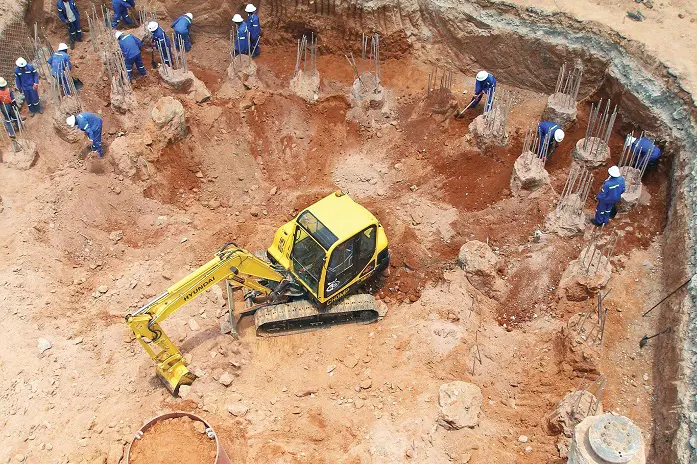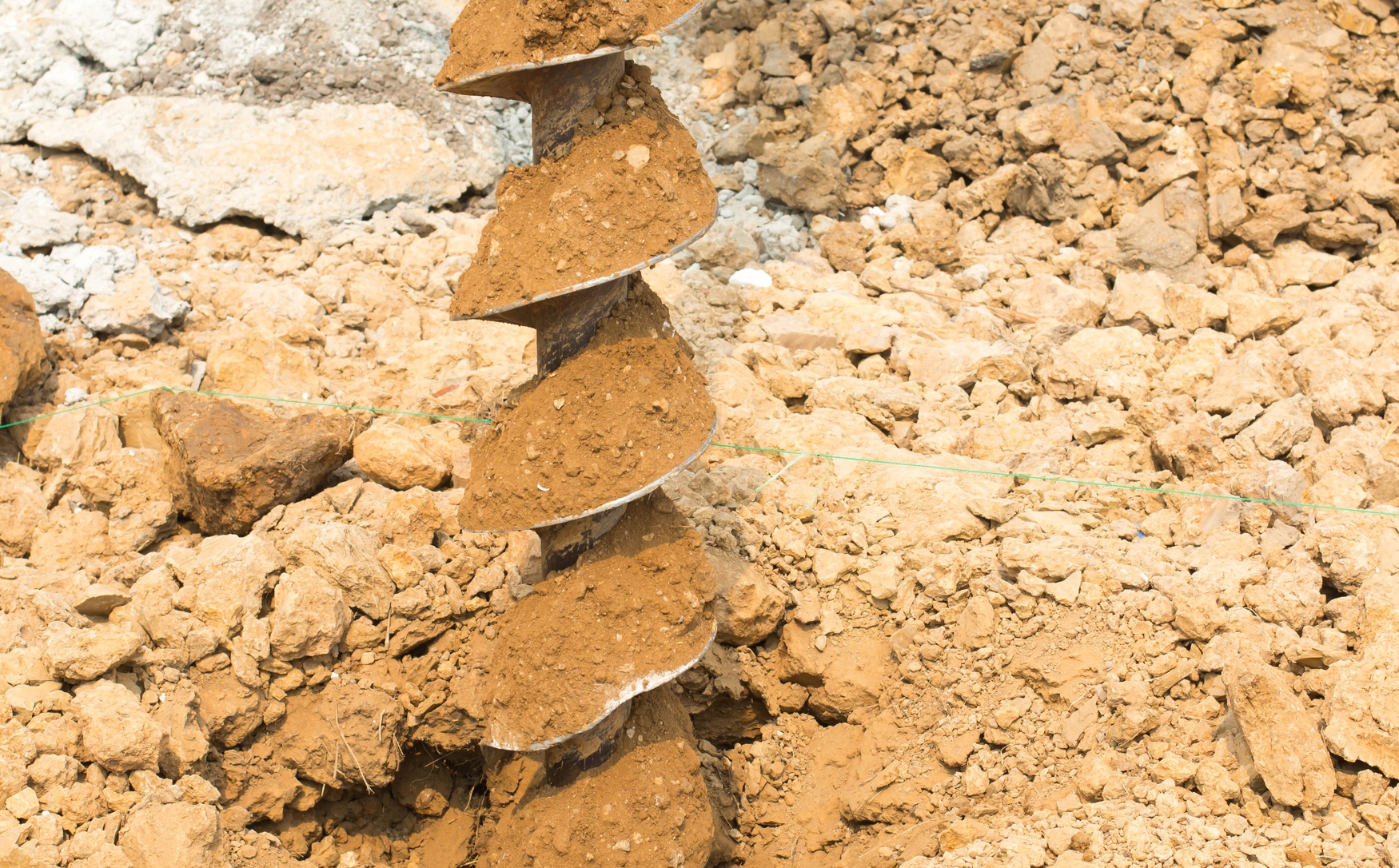Why All About Geotechnical Engineering Matters in Today's Infrastructure Development
Why All About Geotechnical Engineering Matters in Today's Infrastructure Development
Blog Article
A Detailed Review of Geotechnical Engineering Techniques and Their Effect on Modern Civil Design Projects
Geotechnical engineering serves as the backbone of modern-day civil engineering, offering important strategies that address the intricacies of subsurface conditions. The interaction of dirt analysis, foundation layout, and cutting-edge technologies shapes the honesty and sustainability of facilities projects.
Relevance of Geotechnical Design
Geotechnical design serves as a critical structure for civil engineering jobs, affecting the safety and stability of frameworks. This discipline concentrates on the behavior of soil and rock products, offering important understandings that guide the style and building and construction processes. By understanding the interaction in between the earth and crafted structures, geotechnical designers can assess dangers connected with ground problems, such as settlement, slope security, and liquefaction.
The importance of geotechnical design prolongs past mere structural stability; it plays an important duty in environmental management and sustainability. Appropriately executed geotechnical evaluations ensure that projects lessen their eco-friendly impact and comply with regulatory demands (about geotechnical engineering). Additionally, geotechnical design contributes in site selection, enabling designers to identify suitable locations for building that mitigate prospective dangers.
Furthermore, geotechnical engineering promotes advancement in civil design by progressing methods for ground improvement, foundation design, and excavation. The technique's payments are crucial in resolving obstacles postured by differing soil conditions, thus helping with safe and reliable infrastructure growth. Overall, the value of geotechnical engineering is paramount in ensuring that civil design projects are not just possible but also resistant against natural and man-made hardships.
Secret Methods in Geotechnical Engineering

An additional vital method is soil stabilization, which includes modifying soil homes to improve load-bearing ability or minimize negotiation. Methods such as adding cement, lime, or utilizing geosynthetics are generally used to attain dirt enhancement.
Ground enhancement methods, including vibrant compaction and vibro-replacement, are likewise crucial. These techniques aim to compress loosened or soft soils, boosting their toughness and reducing liquefaction possibility in seismic areas.
Maintaining frameworks, such as sheet stacks and soil nailing, are employed to support excavations and stop dirt movement. Moreover, slope stablizing techniques, consisting of drain systems and keeping wall surfaces, are crucial for alleviating landslide dangers.

Soil Evaluation and Evaluating Methods
Efficient soil evaluation and screening methods are crucial for understanding the physical and chemical buildings of dirt, which straight influence engineering decisions. A thorough assessment of dirt qualities is important for predicting habits under numerous loading conditions and environmental impacts.
Usual soil screening techniques include both field and lab techniques. Area tests, such as the Criterion Penetration Test (SPT) and Cone Penetration Examination (CPT), supply instant understandings right into dirt toughness, thickness, and stratification. These examinations help designers evaluate website conditions effectively before even more comprehensive research laboratory analyses.
Lab testing approaches, such as Atterberg limits, grain dimension distribution, and compaction tests, are important for identifying dirt plasticity, moisture material, and optimal compaction levels. Progressed techniques like triaxial tests and combined undrained (CU) examinations offer important information on shear strength and effective anxiety parameters.
Chemical testing, including pH, electric conductivity, and natural material analysis, is likewise crucial for recognizing possible dirt contamination and its effect on building products. Jointly, these dirt evaluation and screening methods form the foundation of company website notified decision-making in geotechnical engineering, guaranteeing the security and security of modern-day civil design tasks.
Structure Layout Approaches
Foundation style strategies are crucial in guaranteeing the stability and longevity of structures. These methods can be categorized into deep and shallow foundations, each matched to details dirt conditions and packing scenarios. Superficial foundations, such as spread grounds and mat foundations, are generally utilized when surface soils have sufficient bearing capacity. They disperse the tons over a larger area, minimizing negotiation dangers.
In contrast, deep structures, including piles and drilled shafts, are utilized when surface area dirts are weak or poor for sustaining the structure. These structures transfer tons to much deeper, extra steady soil or rock layers, making them important for skyscrapers and bridges in challenging geotechnical problems.
Selecting the ideal foundation layout includes detailed geotechnical investigations, consisting of soil make-up, birthing ability, and groundwater problems. Moreover, engineers must think about elements such as negotiation, lateral tons, and potential seismic task to make sure the structure's performance gradually.
Ultimately, a well-executed foundation layout is a critical element of civil design, hop over to these guys straight influencing the safety, resilience, and performance of frameworks. about geotechnical engineering. By straightening foundation kinds with site-specific problems, designers can effectively reduce dangers connected with foundation failing
Technologies Shaping Civil Engineering

Lasting products, such as high-performance concrete and recycled aggregates, are likewise obtaining traction, advertising green practices while preserving structural stability. In addition, advanced geotechnical strategies, such as ground improvement and deep mixing techniques, are boosting the security of structures in difficult dirt problems.
In addition, the use of drones and remote noticing innovation is improving website checking and evaluating, providing real-time data that aids in taking care of construction progress and security. The implementation of cutting-edge construction approaches, such as modular and prefabricated building and construction, further accelerates job timelines and hop over to here minimizes waste. Collectively, these advancements are not just changing civil design methods however likewise ensuring that modern framework fulfills the needs of a growing worldwide population while resolving environmental worries.
Final Thought
In final thought, geotechnical engineering techniques are integral to the success of modern civil engineering jobs. The application of site investigation, dirt stabilization, and ground enhancement approaches ensures the safety and security and security of infrastructure. Developments such as Structure Info Modeling (BIM) and advanced surveillance innovations further boost project performance and accuracy. By using these methods, engineers can alleviate threats and add to the advancement of resilient metropolitan environments, inevitably fostering lasting growth and safety and security in civil engineering techniques.
Geotechnical design serves as the foundation of modern civil engineering, giving essential methods that resolve the complexities of subsurface conditions.Geotechnical design offers as an essential foundation for civil engineering jobs, affecting the safety and stability of structures.In enhancement, geotechnical engineering cultivates innovation in civil engineering by advancing methods for ground renovation, structure design, and excavation. Generally, the relevance of geotechnical design is paramount in making sure that civil design tasks are not only feasible but likewise resilient against manufactured and natural difficulties.
In verdict, geotechnical design strategies are important to the success of modern-day civil engineering jobs.
Report this page